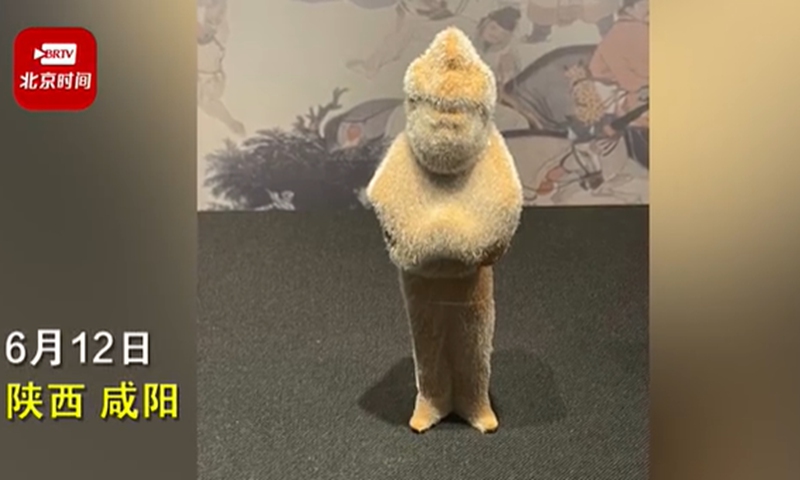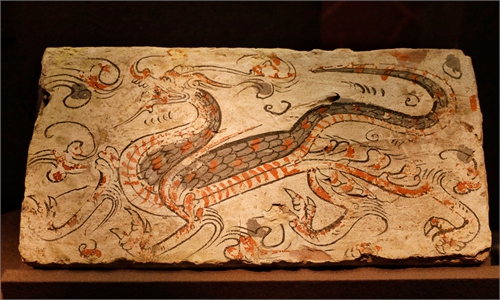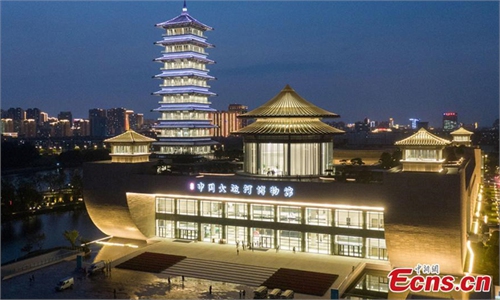Museum responds to the public announcing that 'fur' grown on pottery figurines is soluble salt precipitate

Photo: Screenshot of a Weibo video
After two pottery figurines in a museum in Xianyang, Northwest China's Shaanxi Province, were found to have grown "fur" in an exhibition and went viral on social media, the museum responded to public concerns on Wednesday night, saying the "fur" is actually soluble salt precipitation.
The controversy started after a netizen on Saturday posted pictures of the pottery figurines which appeared to be covered with pale yellow "fluff" from face to ankle raising questions about the phenomenon.
The unusual look of the pieces soon attracted attention. Some people found the cultural relics "cute" in such "golden furry coat," while others engaged in discussion about what the substance is and how it had grown.
The Qianling Museum said in a post on Sina Weibo on Wednesday that it had withdrawn the two pottery figurines from the exhibition hall for maintenance.
Experts invited by the museum said the appearance of the "fur" is related to the burial environment of the tomb where the pottery figurines were buried. It has been preliminarily determined that the "fluff" on the surface of the figurines is soluble salt precipitate, said the post.
Further scientific analysis and testing will be conducted to find out the cause of the phenomenon, it said.
The Qianling Museum preserves a large number of cultural relics unearthed from the tombs surrounding the Qianling Mausoleum where Emperor Gaozong of the Tang Dynasty (618-907) and Empress Wu Zetian (690-705) were buried together, including more than 4,300 items such as tri-colored terracotta figures, utensils, gold and silver ornaments, and painted pottery.
A cultural relic restoration expert at the Shanghai Museum Cultural Relics Protection Science and Technology Center said in a post that the painted pottery is relatively crisp and easy to absorb groundwater soluble salt.
Jia Wenzhong, Secretary General of the Cultural Relics Restoration Committee of the Chinese Society of Cultural Relics, said the phenomenon was closely related to the temperature and humidity of the environment where the cultural relics were preserved after being unearthed.
"The salt was not removed from the cultural relics when excavated, so when the humidity of the air increased, the precipitation of salt occurred," Jia was quoted in a report from China National Radio.



